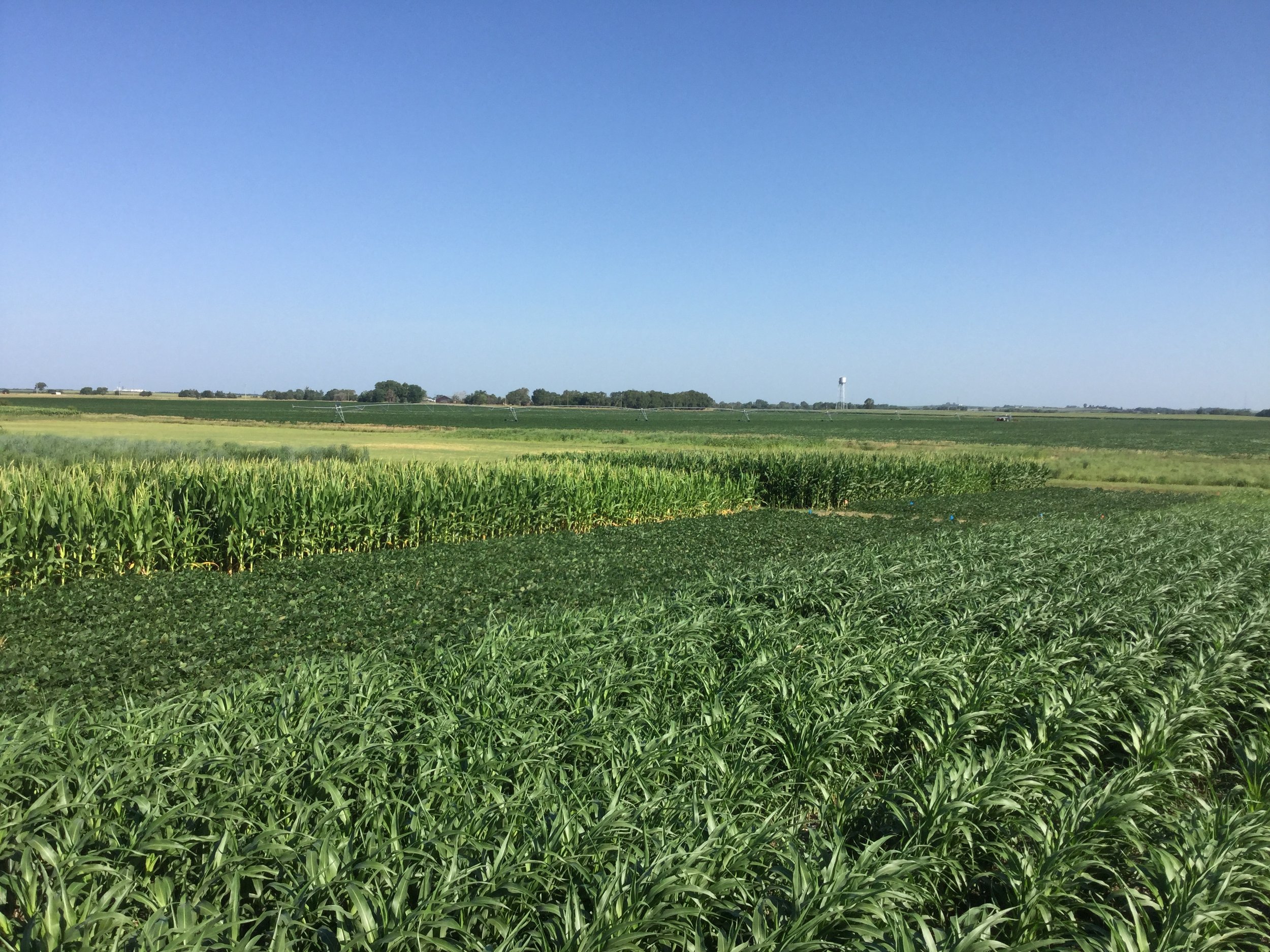Long-term Crop Rotation Study
The Crop Rotation Study was established in 1972 by Dr. Dale Flowerday, University of Nebraska Professor of Agronomy at the Eastern Nebraska Research, Education, and Extension Center near Ithaca, Nebraska and was originally called the crop sequence study. The experiment was transitioned to the USDA-ARS in 1982-1983 where N blocks and existing crop rotations were established along with an additional replication. The experiment, in its current form, aims to understand how the interaction of crop rotations and nitrogen fertilizer effect production potential and yield stability of corn (Zea mays L.), grain sorghum [Sorghum bicolor (L.) Moench], and soybean [Glycine max (L.) Merr.] in rain-fed environments. The overall goals of the experiment are to understand linkages between cropping system performance and soil carbon trends; yield stability; and soil biology.
Producer relevance
The experiment represents cash-grain, grain-forage, and mixed crop-animal production systems. The majority of producers in the area would employ the simplest crop rotation (control). The most complex crop rotation represents an aspirational treatment that most farmers in the area would not employ.
Expected benefits
Experimental treatments were selected to be carbon-building, use fewer external inputs, no-tillage, and soil health-building.
Local stressors
The expected climate change-related stressors in the area are: droughts, heat, extreme precipitation events, seasonal temperature changes, shifting rainfall patterns, and shifting snowfall patterns.

An aerial view of the Long-Term Crop Rotation Study from July 2018. Note the truck and person in a red jacket for scale.

Flowering wheat intercropped with clover, late June 2016.

From left to right: maize, soybean, and sorghum plots, July 2019.

Soybean (left), sorghum (middle), and maize (right), July 2019.

Ears of maize from contrasting fertility treatments.